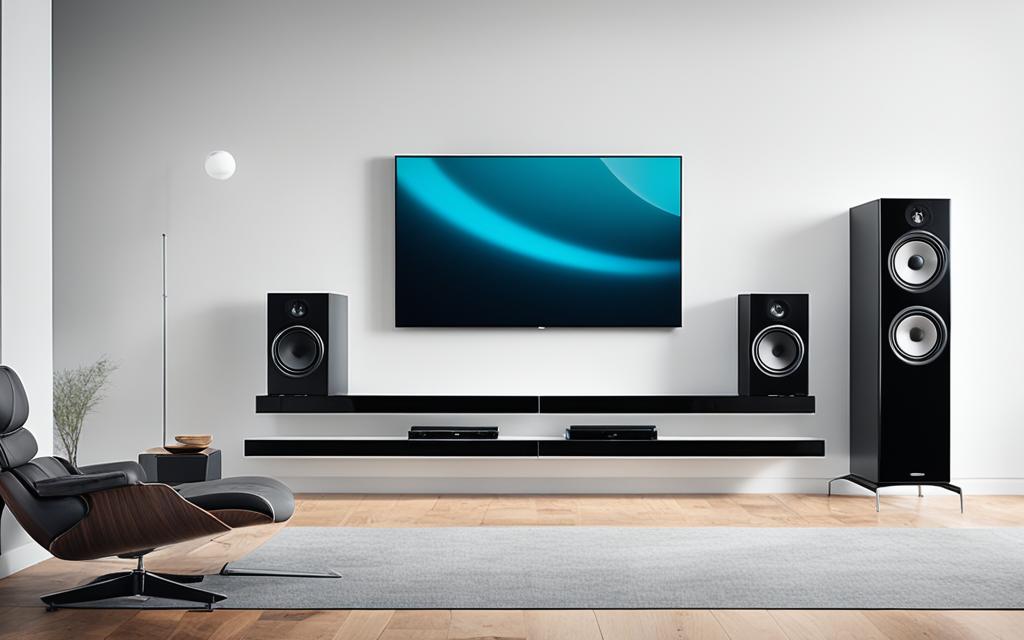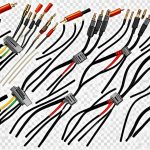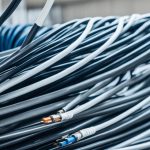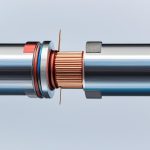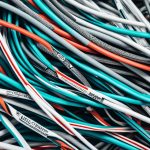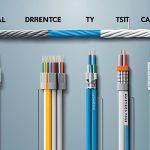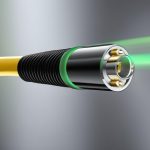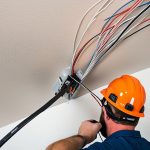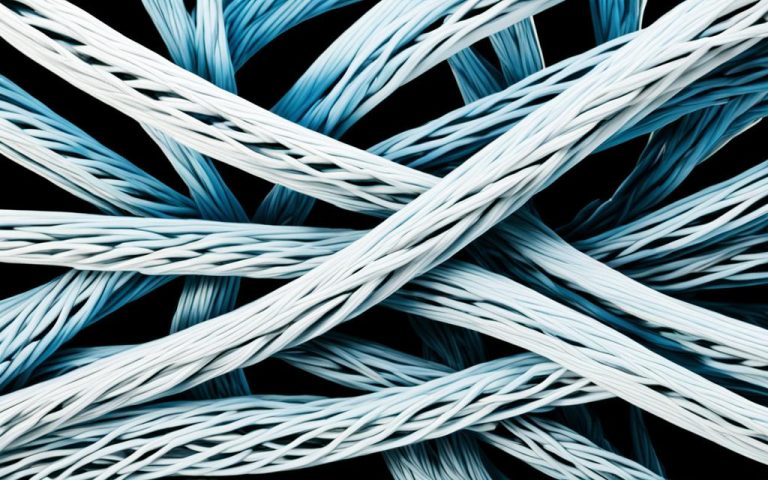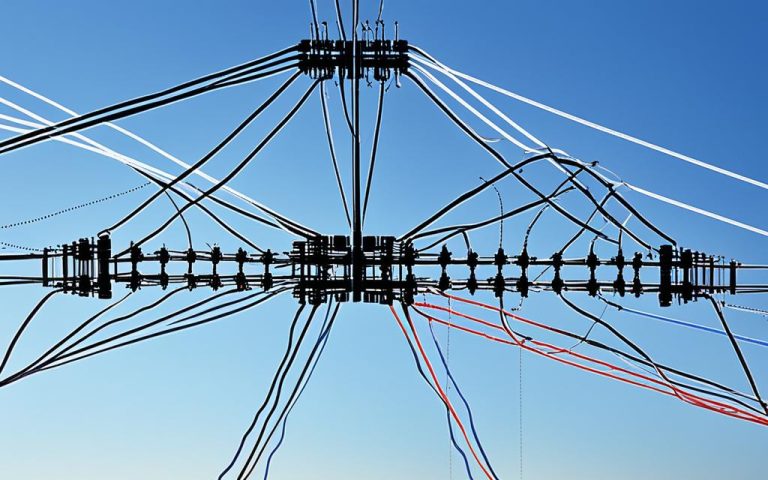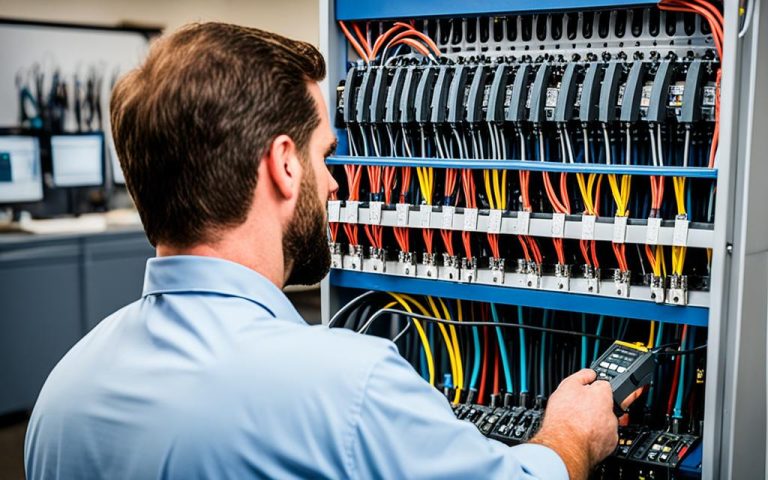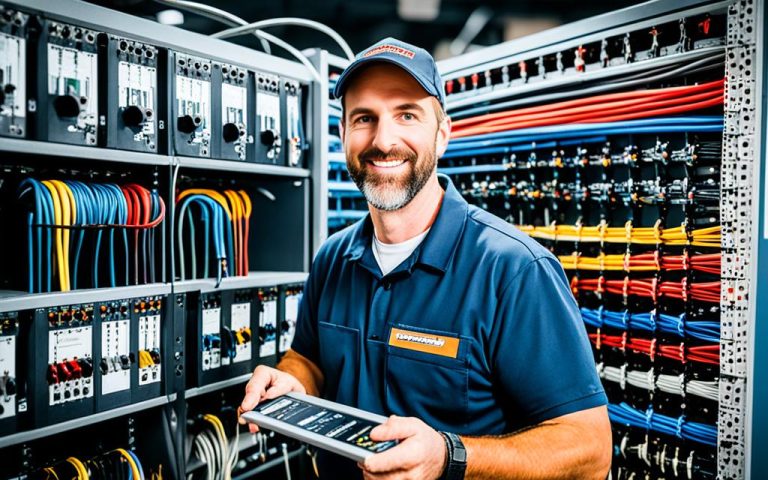Coaxial cables are an essential element in modern audio systems, providing a reliable and efficient means of transmitting signals. With their ability to deliver crystal-clear sound quality and ensure reliable performance, coaxial cables have become a go-to choice for audio enthusiasts and professionals alike.
Whether you’re setting up a home theater system, a professional audio studio, or installing security cameras, coaxial cables offer the ideal solution for achieving optimal audio connectivity. Their unique design, comprising a central conductor, insulating layers, and a metal shield, allows for efficient transmission of high-frequency signals with minimal interference.
How Coaxial Cables Work
Coaxial cables play a crucial role in the transmission of signals between devices. Understanding how these cables work is essential for maximizing audio system performance.
The key components of a coaxial cable include the central conductor, metal shield, and insulating layers. The central conductor is responsible for carrying the electrical signal, while the metal shield acts as a protective barrier against interference.
Coaxial cables are designed with multiple insulating layers that provide insulation and maintain the integrity of the signal. This insulation prevents any loss of quality during signal transmission, resulting in optimal audio performance.
The efficient design of coaxial cables allows for the transmission of high-frequency signals over long distances without degradation. This is particularly important in audio systems, where maintaining signal integrity is crucial for achieving crystal-clear sound quality.
Coaxial cables are engineered to minimize interference, ensuring reliable signal transmission in audio setups. The metal shield surrounding the central conductor acts as a barrier against external interference, preventing any unwanted disturbances or distortions.
Overall, coaxial cables provide an efficient and effective solution for transmitting signals in audio systems. Their ability to minimize interference and maintain signal integrity makes them an ideal choice for achieving high-quality sound transmission.
Advantages of Coaxial Cables for Audio Systems
When it comes to audio systems, coaxial cables offer numerous advantages that make them the preferred choice for signal transmission. Let’s explore the benefits of using coaxial cables in audio setups:
1. Reliable Performance
Coaxial cables are designed to transmit signals over long distances without compromising the quality of the audio. Whether you’re connecting speakers, amplifiers, or audio devices, coaxial cables ensure reliable performance by maintaining the integrity of the signal from the source to the destination.
2. Minimal Interference
One of the key advantages of coaxial cables is their superior shielding capabilities. The metal shield surrounding the central conductor effectively blocks external electromagnetic interference, ensuring minimal disruption to the audio signal. This results in high-quality sound transmission without any distortions or noise.
3. Cost-Effective Solution
Coaxial cables are a cost-effective option for achieving superior audio connectivity. Compared to other types of cables, coaxial cables provide excellent performance at a reasonable price. Their durability and longevity also contribute to their cost-effectiveness, as they require fewer replacements or repairs over time.
4. Compatibility and Versatility
Coaxial cables are widely used in various applications such as cable television, internet connections, and telecommunications. Their compatibility with different audio and video technologies makes them a versatile choice for connecting audio systems. Whether you’re setting up a home theater, professional audio setup, or security camera installation, coaxial cables can meet your connectivity needs.
5. High-Quality Signal Transmission
With their efficient design and advanced technology, coaxial cables ensure high-quality signal transmission. They have the capability to carry both analog and digital audio signals, allowing you to enjoy crystal-clear sound with optimal fidelity. Coaxial cables enable you to experience the full potential of your audio system without any signal degradation.
Overall, the advantages of using coaxial cables in audio systems extend beyond just signal transmission. They provide reliable performance, minimal interference, cost-effectiveness, compatibility, and high-quality sound transmission. Whether you’re a casual listener or a professional audio enthusiast, coaxial cables are an essential component for achieving optimal audio connectivity and enhancing your audio experience.
| Advantages of Coaxial Cables for Audio Systems |
|---|
| Reliable performance |
| Minimal interference |
| Cost-effective solution |
| Compatibility and versatility |
| High-quality signal transmission |
Different Types and Applications of Coaxial Cables
Coaxial cables come in different types to cater to various applications in audio and video systems. Understanding the different types can help you choose the right cable for your specific needs.
Types of Coaxial Cables
Two commonly used types of coaxial cables are RG-6 and RG-59 cables.
| Type | Usage | Specifications |
|---|---|---|
| RG-6 Coaxial Cables | High-bandwidth applications such as cable television and satellite installations. | Thicker central conductor and better shielding for longer cable runs and higher frequencies. |
| RG-59 Coaxial Cables | Shorter cable runs and lower frequencies. | Thinner central conductor suitable for lower bandwidth applications. |
Applications of Coaxial Cables
- Television Connections: Coaxial cables are widely used for connecting televisions to cable/satellite boxes or antennas. They provide reliable signal transmission, ensuring a clear and uninterrupted TV viewing experience.
- Internet Connections: Coaxial cables play a crucial role in providing fast and stable internet connections. They are commonly used to connect modems or routers to cable internet service providers.
- Security Camera Installations: For surveillance systems, coaxial cables are essential for connecting security cameras to recording devices or monitors. They offer high-quality video transmission and are capable of long cable runs, ensuring robust security coverage.
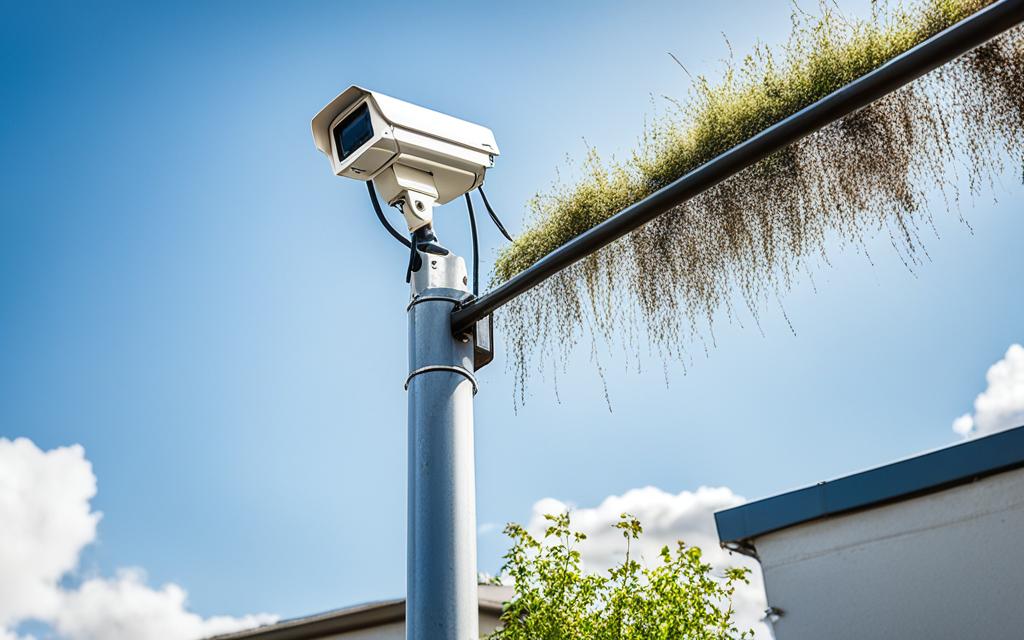
“Coaxial cables are the backbone of audio and video systems, providing efficient signal transmission and compatibility with various technologies.”
With their versatility and reliable performance, coaxial cables are widely used in residential, commercial, and industrial settings. Whether it’s for television connections, internet setups, or security camera installations, coaxial cables deliver the signal integrity necessary to achieve optimal audio and video quality.
Conclusion
Coaxial cables are an essential component in audio systems, delivering unparalleled performance and exceptional sound quality. Designed to transmit high-frequency signals with minimal interference, these cables ensure optimal signal integrity and transmission over long distances, making them ideal for a wide range of applications.
Whether it’s a home theater system, a professional audio setup, or a security camera installation, coaxial cables provide a reliable solution for superior audio connectivity. They are renowned for their crystal-clear sound reproduction, allowing listeners to experience every nuance and detail in their favorite music, movies, and games.
With the ability to support both analog and digital audio signals, coaxial cables offer versatility and compatibility with various audio technologies. Their efficient design minimizes signal loss and distortion, resulting in uncompromised performance. No matter the complexity of the audio setup, coaxial cables ensure a seamless and immersive audio experience.
Investing in high-quality coaxial cables is crucial for maximizing the potential of your audio system. Whether you’re a professional audio engineer or an enthusiastic music lover, choosing reliable coaxial cables is essential for achieving the best sound quality and performance. Trust the power of coaxial cables to deliver the exceptional audio experience you deserve.
FAQ
What are coaxial cables?
Coaxial cables are a type of electrical cable commonly used for transmitting high-frequency signals in audio systems. They consist of a central conductor, an insulating layer, a metal shield, and an outer insulating layer.
How do coaxial cables work in audio systems?
Coaxial cables work by carrying electrical signals between devices. The central conductor carries the signal, while the metal shield protects it from external interference. The insulating layers provide insulation and maintain the integrity of the signal.
What are the advantages of using coaxial cables in audio systems?
Coaxial cables offer several advantages in audio systems. They can transmit signals over long distances without loss of quality, provide better shielding against interference, and ensure high-quality sound transmission.
What are some different types and applications of coaxial cables?
There are different types of coaxial cables available for various applications. RG-6 coaxial cables are commonly used for high-bandwidth applications such as cable television and satellite installations. RG-59 coaxial cables are suitable for shorter cable runs and lower frequencies. Coaxial cables are widely used in television connections, internet connections, security camera installations, and antenna connections.
Why should I choose coaxial cables for audio connectivity?
Coaxial cables are a valuable component in audio systems, offering reliable performance and crystal-clear sound quality. They provide an efficient and cost-effective solution for superior audio connectivity in home theater systems, professional audio setups, and security camera installations.

